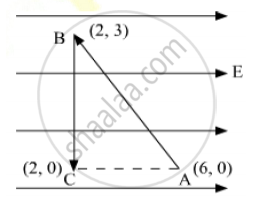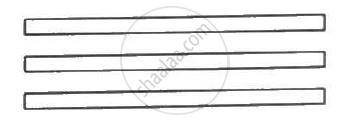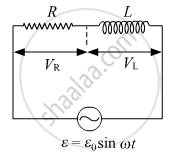Advertisements
Advertisements
प्रश्न
If potential difference between the two ends of a metallic wire is doubled, drift speed of free electrons in the wire ______.
विकल्प
Remains same.
Becomes double.
Becomes four times
Becomes half
उत्तर
If potential difference between the two ends of a metallic wire is doubled, drift speed of free electrons in the wire becomes double.
Explanation:
Drift velocity `= v_d = (eVτ)/(ml)`
When V is Potential difference
According to question, V = 2V
Then `v_d = (2eVτ)/(ml)`
= `2v_d`
Hence, drift velocity also becomes double.
APPEARS IN
संबंधित प्रश्न
Define 1 volt PD.
A metal rod of square cross-sectional area A having length l has current I flowing through it when a potential difference of V volt is applied across its ends (figure I). Now the rod is cut parallel to its length into two identical pieces and joined as shown in figure II. What potential difference must be maintained across the length of 2l. so that the current in the rod is still I?

Explain the principle of a device that can build up high voltages of the order of a few million volts.
Draw a schematic diagram and explain the working of Van de Graff generator device.
A test charge ‘q’ is moved without acceleration from A to C along the path from A to B and then from B to C in electric field E as shown in the figure. (i) Calculate the potential difference between A and C. (ii) At which point (of the two) is the electric potential more and why?

Find the potential difference between the points A and B and between the points B and C of the figure in steady state.

The capacitance between the adjacent plates shown in the figure is 50 nF. A charge of 1.0µC is placed on the middle plate. If 1.0 µC is placed on the upper plate instead of the middle, what will be the potential difference between (a) the upper and the middle plates and (b) the middle and the lower plates?

What will be the potential difference in the circuit when direct current is passed through the circuit?

Two metal pieces having a potential difference of 800 V are 0.02 m apart horizontally. A particle of mass 1.96 × 10–15 kg is suspended in equilibrium between the plates. If e is the elementary charge, then charge on the particle is ______.
Can there be a potential difference between two adjacent conductors carrying the same charge?
